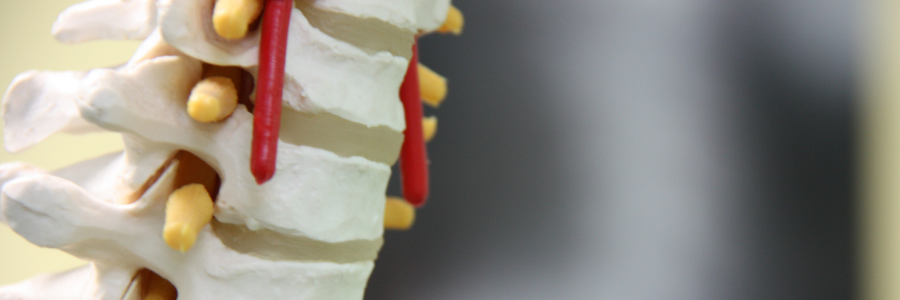
Thoracic spine trauma
Thoracic spine trauma can result from major (high-energy) injuries that involve large forces. Trauma to any part of the spine is very serious and needs to be looked at by a doctor. Fracture to the thoracic spine (mid-back) can occur in cycling injuries, impact sports and motor accidents.
Symptoms
Thoracic spine trauma involves an obvious mechanism such as a blow, crush or impact trauma. Small accidents can lead to thoracic spine fracture in osteoporotic vertebrae (spinal bones) or vertebrae weakened by disease or neoplasms (cancer). Pain is the most obvious symptoms with any trauma, especially in the spine, there may also be deformity and loss of function.
Fractures types due to thoracic spine trauma
Most thoracic spine fractures occur in the lower thoracic spine, with 60%-70% of thoracolumbar fractures occurring in the T11-L2 region. The majority of these fractures occur without spinal cord injury. 20%-40% of the fractures are associated with neurologic injuries. High-energy trauma is the most common cause of thoracic fractures. Minor trauma can also cause a thoracic spine fracture in individuals who have a condition associated with loss of bone mass (e.g. osteoporosis).
There are four major types of thoracic fracture (based on the mechanism of injury):
- Compression (wedge fractures). Caused by axial compression (vertical) alone or flexion forces
- Burst. Similar to compression, except that the entire vertebra is crushed.
- Flexion-distraction (seatbelt injury/chance fracture). Involves the separation (distraction) of the fractured vertebra.
- Fracture-dislocation. Fractures found in combination with displacement of adjacent vertebrae.
Treatment
Thoracic spine trauma treatment depends on many factors. Please see your medical doctor for more information.





